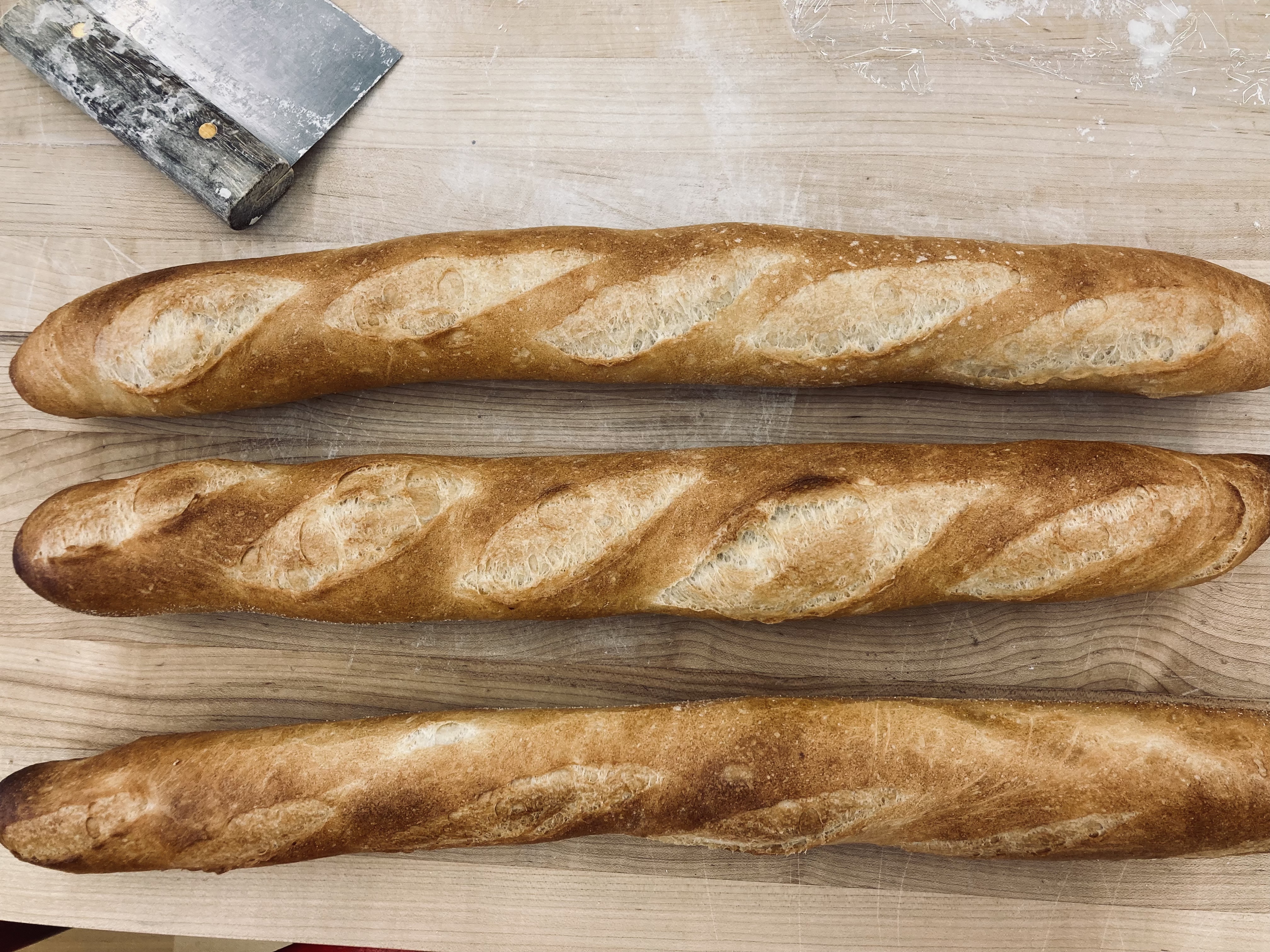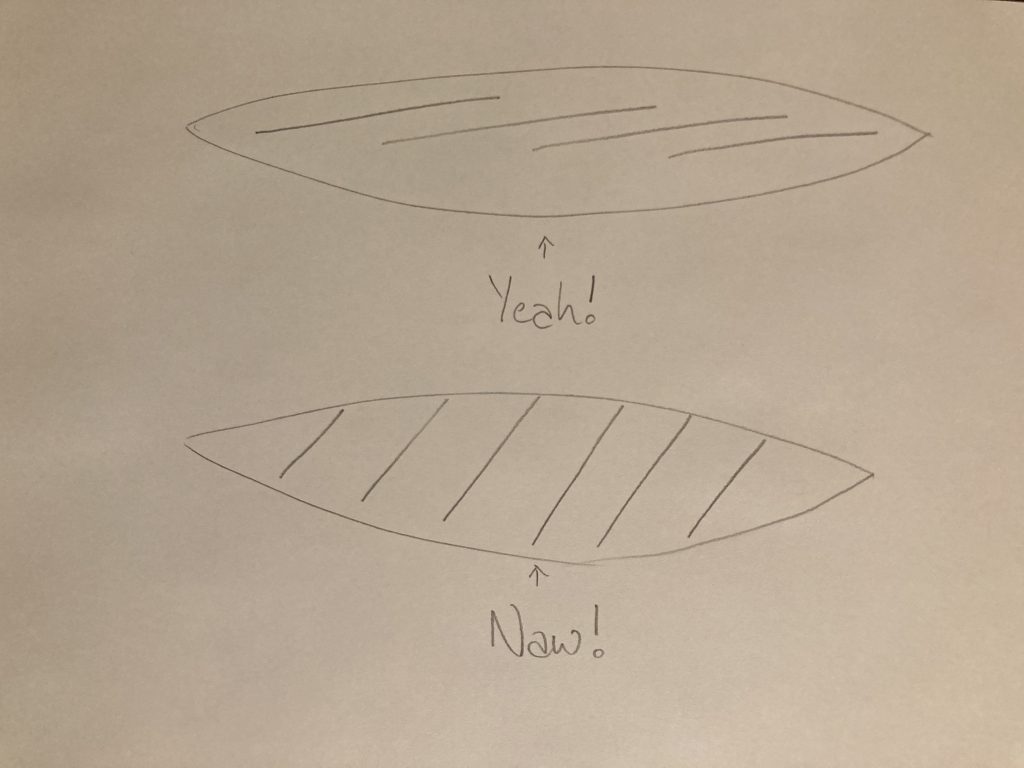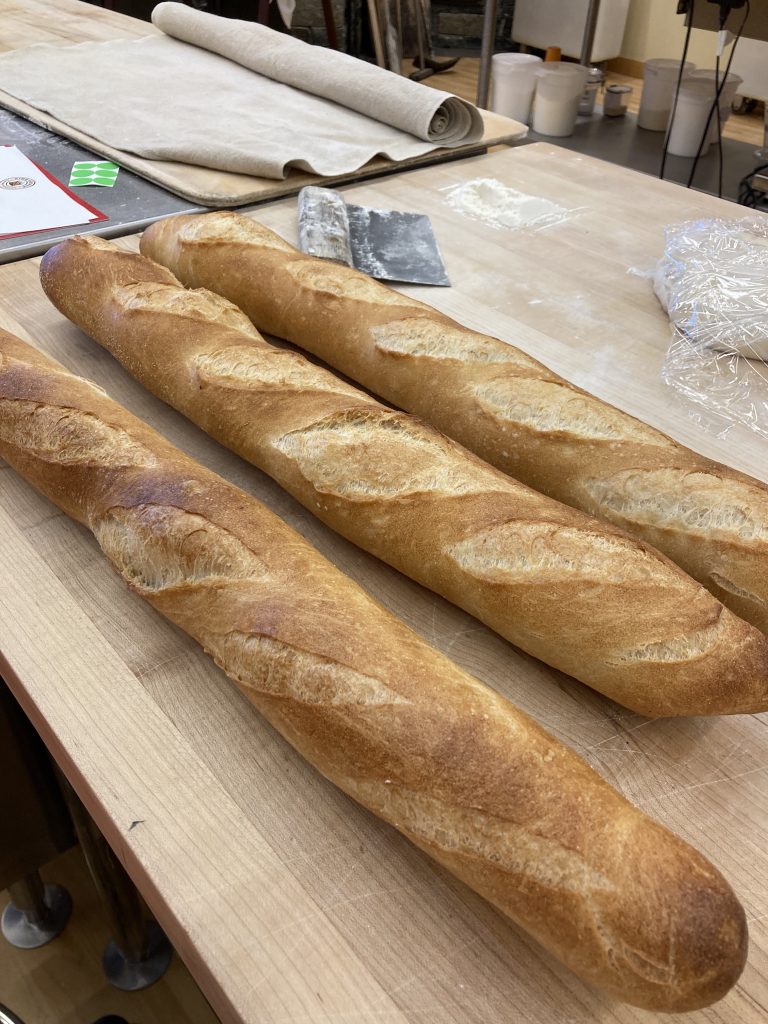After the first day of classes flew by, I was left to savor my final five hours in the King Arthur classroom diving into Beauty and the Baguette. As with much of French gastronomy, there was a certain level of intimidation in approaching baguette making. Baguette making is nominated to be made an UNESCO intangible cultural heritage, there is a yearly competition to determine the best baguette baker in France. They are dearly beloved and generally represent the deceptively simple sort of baking. Like most other breads the ingredients are just flour, water, yeast, and salt. You mix, you knead, you ferment, you form, you bake. But it is the special and specific ways you do it all that make the minute differences that will give you either a crackly crust and aerated inside, or another chewy loaf. Tasty, but not a baguette. Being an honors student, I was not interested in producing anything less than a true – if likely imperfect – baguette from my new baguette pan.
Now, when I started this series of posts by recounting my sudden awakening in the middle of the night with the sense memory of forming baguettes, I truly wish I was lying. But the most sparkling gem of knowledge gained about this high hydration dough – like sourdough – was all in the specifics of the hand work once the dough was mixed and proofed. And because I had already spent the previous afternoon cutting and reforming, slapping and folding, I was rearin’ and ready to go when the time came, but this time with an all AP Flour, yielding a slightly silkier and slacker starting product to my hands. However, when I called on my lesson from the previous day and came at it with a gentle grip in the fingers and decisive flip of the wrists, I had gluten structures in no time.
But it was not the kneading process, however joyous, that had me tossing and turning in my bed. It was the shaping. After a rest, some folding, and some more resting, we were ready to divide our bulk into balls from which we would form our epee-like loaves. Having watched some tutorials before arriving I was ready for the basic idea: letter fold, seal, fold halfway, seal, fold all the way over, seal, coax into loaf. But when I have gone about similar shaping practices for other loaves, I had never been able to get it into quite the shape I was after. I often found myself going back to my seal to pinch it together or rolling the dough into something with a slightly skinnier middle than the ends. Neither of these would do in baguette making.
Once again, what I found was a valuable lesson in learning by feel and the need to adjust the approach to the dough as you find it. While we were looking for beautiful, irregular holes in our finished product, I could not be timid in my handling, scared to knock out all my air for all time. Take the degassing – the patting and light kneading that precedes the pre-shape – seriously. Don’t be afraid to handle the dough as much as it needs to get where it needs to go and stay there. The force from the crux of my thumb or the heal of my hand was not only non-harmful, but necessary. The dough was light, yes, but not hanging on by a thread. I suspect some of this consternation over shape handling stems from my early ciabatta chasing days, where everything after the bulk ferment was a careful dance not to agitate it too much should we risk losing the beautiful bubblage. I had been burned too many times by an inefficient dough divide or mishandled transfer to the baking sheet to trust less finicky doughs. But while we were still talking crusting and airy breads from western Europe, the shaping story was totally different. And I found myself reveling in the balance of firmness and gentility that the dough was best handled with. The gradual tautness achieved with each fold and seal. The guidance from short rectangle to tapered stick. It was this that had me stirring in the night, yearning to get my hands on some pillowy dough to fold and seal and roll it towards its inevitable future of baguette-hood.
After a final rest in rippled couches, it was time to transfer onto some peels for a lesson in scoring. While sourdough could be scored to the hearts delight, the scoring method for baguettes was, predictably, more strictly defined. To get the sought after “ears” – that crusty flap of bread resulting from a bit of rolled dough next to the burst, scored section – we needed to come at our slashes with the right grip, at the right angle, and making the right slashing pattern. Rather than making our slashes short and semi-lateral from long edge to long edge, we needed to make long, nearly parallel diagonal slashes down the length of the bread.
This seemed simple enough. While I am no great sketcher or artist, I am pretty okay at copying with careful observation and a preparatory attempt in the air. And as the slashing pattern went my scoring went well! But with one loaf down and a slash into another, the instructor noticed I wasn’t holding the lame quite right, and consequently wasn’t coming at it with the right angle. I struggled a little to re-adjust my grip, but eventually got my scores in as best I could. I wish I had infinite baguettes at my disposal for the sole purpose of practicing this scoring, as this was definitely my biggest hurdle. But alas, I just have to make more bread.
Despite this scoring struggle, my baguettes emerged from their stint in the magical steaming ovens golden and crackly as bread could be. There was a crook in the neck of one or two, but on the whole my set of five baguettes were, indeed, baguettes! And with truly more bread than I knew what to do with in hand after a day and a half of baking, it was time to say goodbye to the King Arthur campus and make the trek home to fulfill the bread’s highest purpose by eating some. Not wanting to waste the glories of hours-fresh bread, dinner that night consisted of baguettes, cheese, meats, and mustards. How much better does it get?
Since my triad of classes at King Arthur I have called upon what I learned every time I approach a bake – bread or not. I got back in touch with the meditative joys of single-tasking and the pleasures of hand mixing and kneading. I have been producing loaves with a little more know-how and the confidence that comes with it, thus reaping the tasty benefits. And if I am kept awake at night from the slightly obsessive joy that comes with? So be it.





Leave a Reply